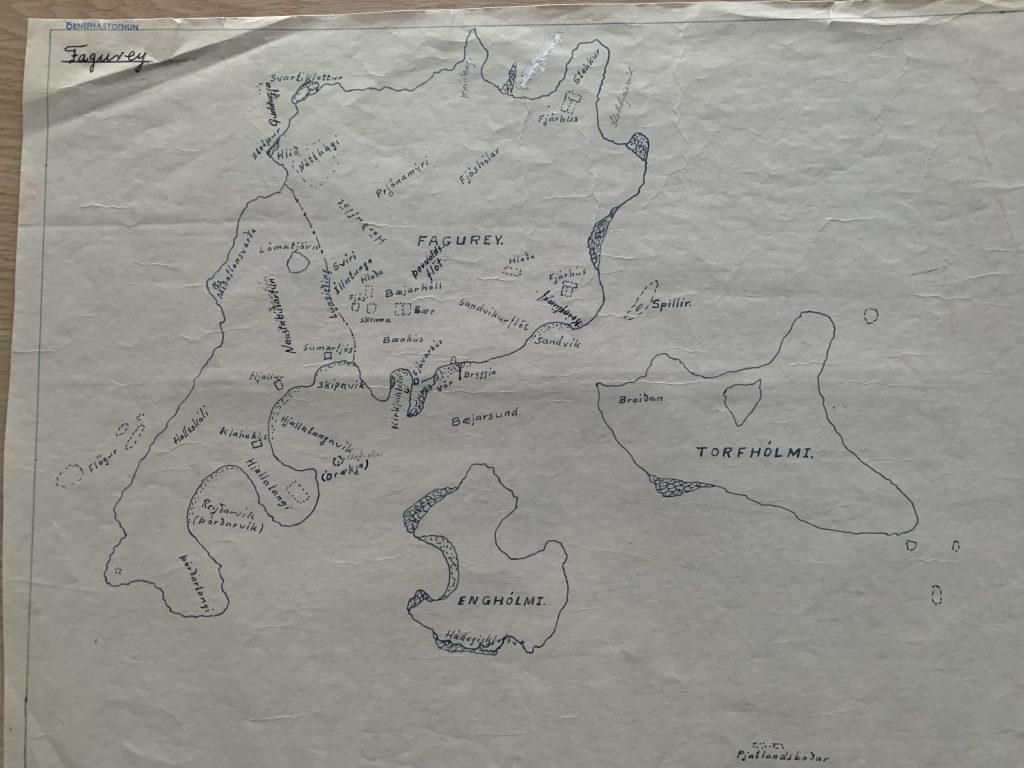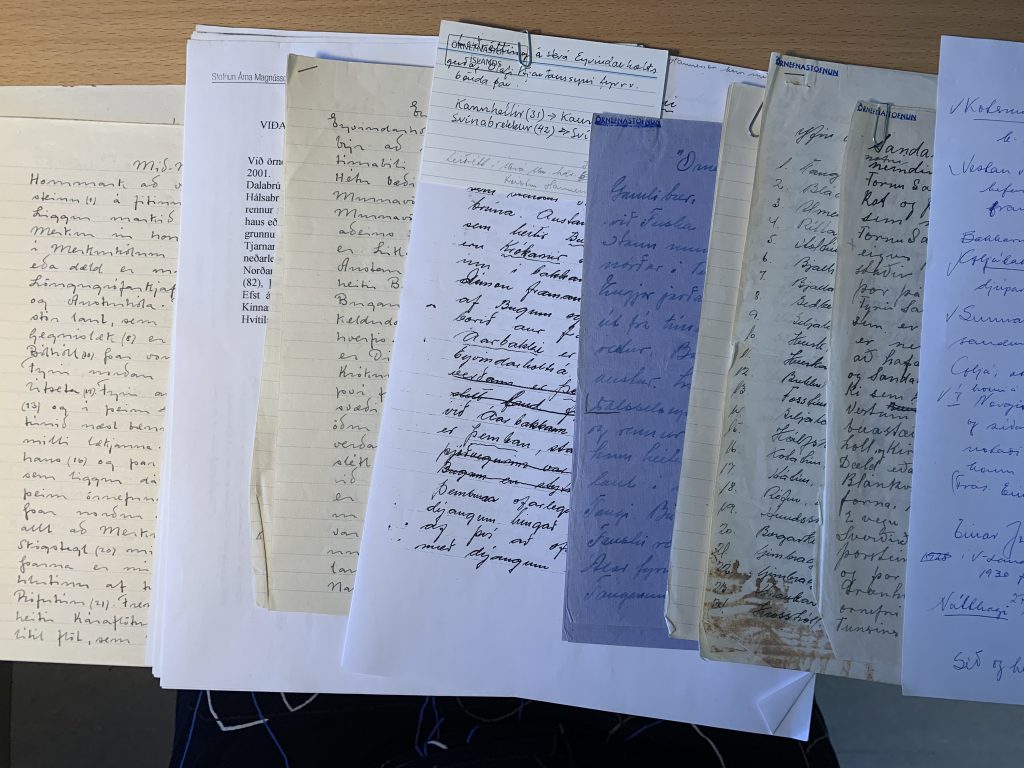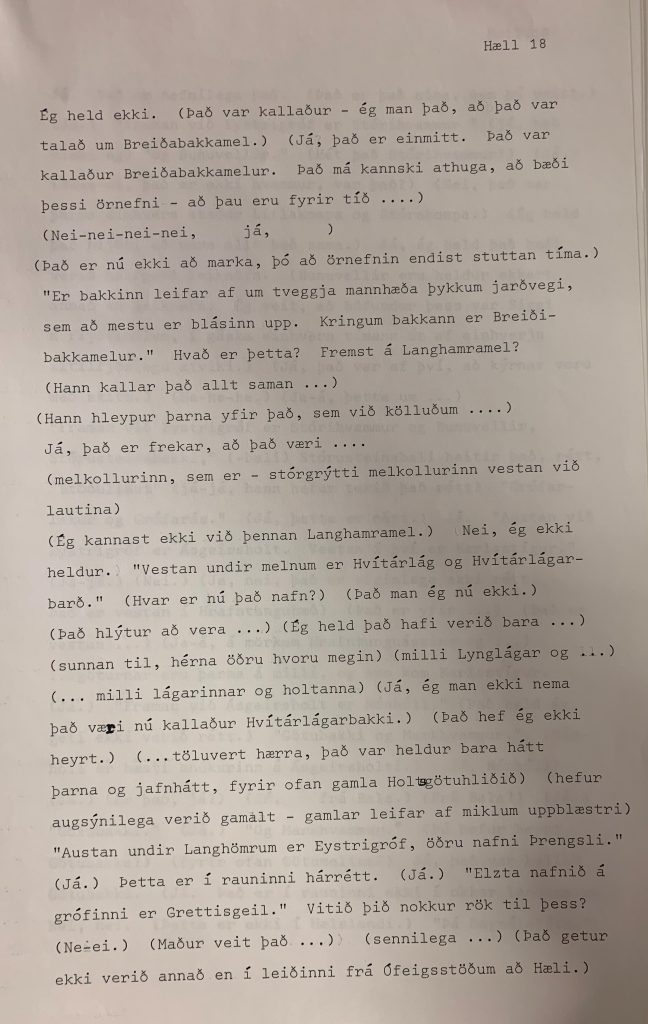by Birna Lárusdóttir
Ongoing work at the place-name archive
The Icelandic place-name archive is currently being reorganized and registered into a database. The bulk of the collection dates from the 1940s to the 1980s. It consists of several categories or layers. Finished and edited place-name descriptions are the most accessible layer, where the toponomy appears as a part of a holistic landscape description which enables readers to travel through the landscape in their mind and get a fuller picture of the place names and their meanings in context.

Most of these complete descriptions are now accessible online at nafnid.is. Behind these descriptions lies a layer of data which remains largely unexplored but sheds light on the collection and how it was shaped. This layer consists of background data such as complete manuscripts, lists of names, letters from informants to the staff of the archive (earlier: The Icelandic Place-Name Institute), comments on existing descriptions and hand-drawn maps.

A recording from 1970
The archive contains many hidden gems which give a glimpse into the dynamics and the social context of both individual names and whole registers. A personal favorite is a conversation recorded in 1970 between three brothers who all grew up on the same farm, Hæll in Gnúpverjahreppur in the south of Iceland.
Hæll is a farm rich in family traditions, where many generations of the same family had lived before them. Their aim is to review an older place-name register, most likely from the 1920s, which had been written by an avid collector with no personal connection to their farm. One brother reads the text out loud, while the others provide an endless stream of commentary: Já, já-já, jú-jú, yes, I remember, I don’t think so, we didn’t really use that name, I would not describe it this way. Sometimes they pause to discuss individual names, locations, events, the time-depth of the text and even the people behind the names. Who could possibly have bestowed them? Why would someone mention a name they have never heard of? Who might the collector have interrogated at the time of the collection?

The brothers add a few missing names and sometimes speculate about whether they are appropriate or not for an official register. Among them are Harðlífi (‘Constipation’) for part of an irrigation ditch and Bunuvellir (‘Running Fields’), named by a boy who was fetching some cows with “the runs” (I.e., diarrhea). One brother rather dislikes a more innocent name, Miðhús (‘Midhouse’), which according to him is “such a young name that he can only just accept it.”
The name Mígandaskarð (‘Pisser’s Gully’) is also referred to as Smjörvörðuskarð (‘Butter Cairn Gully’) in the old register, to which they all vocally object. This sparks speculation on the collector’s source. After a short debate they agree that it must have been a worker at the farm named Eiríkur, who was known for having his own opinions on place names and was possibly trying to be polite in the case of Smjörvörðuskarð.
From recording to written register
In the above case the main facts of the relatively informal chat were combined into an updated version of the register a few years later by a staff member at the Place Name Institute. It mentions landscape changes and reasons for names falling out of use. Harðlífi is claimed to be rarely used, Bunuvellir is said to stem from a “minor incident” (not explaining the origin) and Miðhús is only mentioned in a footnote, apparently as a temporary name. Mígandaskarð is, however, stated to be the only correct version of the name according to the brothers.
This is a great example of how the place-name register can be a very dynamic document and how people think twice before publishing something officially.
